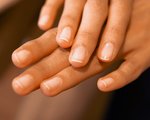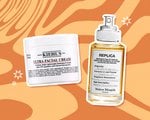How to Remove Acrylics at Home Without Damaging Your Nails
November 02, 2022
How to Remove Acrylic Nails Without Acetone
According to Kandalec, you can use just a regular nail file to remove acrylic nails, but this would take an extremely long time. It’s also possible to remove them using an electric file, or an e-file, but these are best left to the professionals. “I do not recommend these for your own removal if you have not been trained to use them correctly,” says Kandalec. “Using e-files requires specialty training and without knowing the proper bits to use, the direction it should rotate, the correct angle and pressure, or the RPMs, you can cause serious damage to your nail plate — just like using anything else without proper training.” The step-by-step “soak and roll” method is your safest bet for at-home acrylic or dip removal.
Can I Remove Acrylic Nails With Nail Polish Remover?
“Regular polish remover will not totally work, as it will not break the acrylic down — it will make it sticky and gummy,” says Kandalec. You’ll end up with a bigger mess that’s harder to remove, which is why 100% acetone is key.
Can I Remove Acrylic Nails With Hot Water?
While it’s possible to remove your acrylic nails with hot water, Kandalec recommends skipping this method entirely. It will take significantly longer than using acetone and if the water is too hot, you could end up burning yourself. Plus, if the acrylics don’t soften enough in the hot water, removing them will damage your natural nails.
“The worst mistake is when people get impatient and just yank the acrylic off,” says Alcedo. The “soak and roll” process isn’t a hard one but it does require quite a bit of time. So put on your favorite TV series, take your time, and whatever you do, don’t scrape too hard or yank off the acrylic. These are the top two culprits to weak and flimsy nails post-removal, as it takes off layers of your natural nails.
How Should You Care for Your Nails After Taking Off Your Acrylics?
After removing your acrylics, it’s likely that your nails will feel worn out after. Alcedo says the best way to care for your natural nails post-acrylic removal is by cutting them down to avoid inevitable tearing and breaking, and then applying a nail hardener every day, like the Essie Hard to Resist Nail Strengthener Treatment. Available in shades of translucent pink and purple, it uses nail bonding technology to help build stronger, less brittle nails. Other tips Alcedo recommends are eating calcium-rich foods and moisturizing, moisturizing, moisturizing with cuticle oil.

For an extra dose of moisture, try applying a hand cream, such as the CeraVe Therapeutic Hand Cream, a non-greasy, fast-absorbing formula that includes three essential ceramides to help restore the skin’s moisture barrier. It’s only three ounces, so it’s small enough to toss in your bag to reapply on the go, especially after you wash or sanitize your hands.
Additional reporting by Ariel Wodarcyk
































